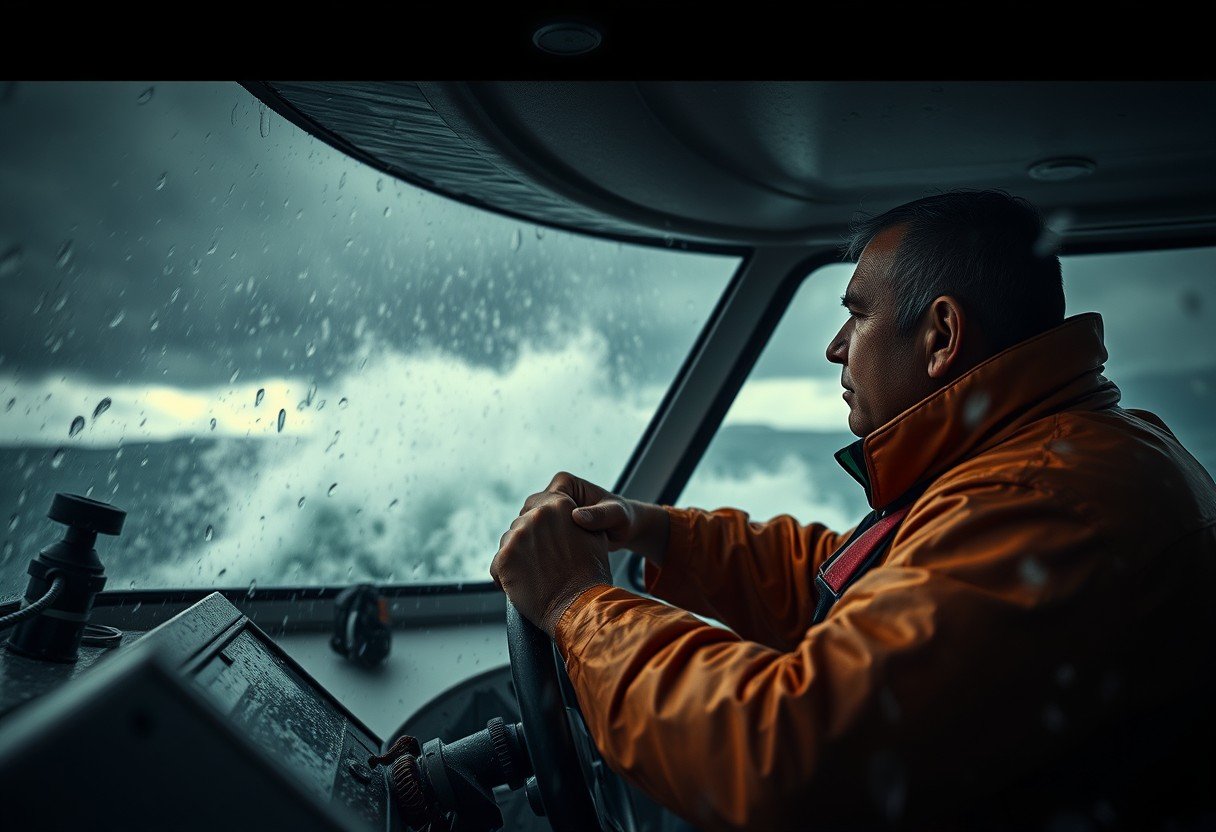When you’re on the water and the weather suddenly turns, knowing the first safety precaution can be a lifesaver. The initial actions you take as a boat operator determine the safety of everyone on board. Prioritizing the right steps ensures you can navigate hazardous conditions effectively, protecting your passengers and your vessel from the unpredictable dangers of a storm. This guide breaks down the most critical first steps to take.
The Immediate First Step on the Water: Prioritizing Life Jackets
Before you do anything else, the absolute first safety action is to ensure every single person on board is wearing a properly fitted life jacket. In rough waters, the risk of falling overboard or the boat capsizing increases dramatically. A life jacket is the single most important piece of equipment for survival in such a scenario.
Ensuring that everyone is wearing a life jacket significantly increases their chances of survival and reduces panic in the event of an emergency. Don’t just tell your passengers where the life jackets are; help them put them on correctly and make sure they are securely fastened. This simple act must become an immediate, non-negotiable reflex at the first sign of stormy weather.
According to U.S. Coast Guard statistics, drowning is the reported cause of death in the vast majority of recreational boating fatalities, and a high percentage of those victims were not wearing a life jacket. This underscores the critical importance of this first step.
How to Read the Signs of an Approaching Storm
Vigilance is key to boating safety. You must constantly assess your surroundings to identify the telltale signs of a developing storm. Recognizing these indicators early gives you more time to take protective measures. Swiftly identifying these threats allows you to make crucial decisions sooner.
Look for changes in the sky and on the water. Some of the most common signs of danger include:
- Darkening, ominous-looking clouds on the horizon.
- A sudden drop in temperature.
- An abrupt change in wind speed or direction.
- Increased wave height or the appearance of whitecaps.
- Distant lightning or the sound of thunder.
Understanding the types of storms you might face is also crucial for preparation. Each has unique characteristics that can affect your boat differently.
| Type of Storm | Key Characteristics |
| Thunderstorms | Develop quickly with heavy rain, strong winds, and dangerous lightning. |
| Tropical Storms | Form over warm waters, bringing sustained high winds and significant rainfall. |
| Hurricanes | Extremely severe storms with destructive winds, storm surge, and torrential rain. |
| Wind Storms | Characterized by powerful winds that may occur without any precipitation. |
Preparing Your Vessel for Rough Waters
Once you’ve identified a storm and ensured everyone has a life jacket on, your next focus should be on preparing the boat itself. An unprepared vessel can become a hazard in turbulent conditions. Loose items can be thrown about, causing injury or damage, and open hatches can take on water, threatening the boat’s stability.
Immediately begin securing the vessel. This involves a quick but thorough checklist of actions to minimize risks.
Making sure all gear and equipment are securely stowed prevents them from becoming dangerous projectiles during rough weather. Close and secure all hatches, windows, and compartments to prevent water from getting in. A well-maintained bilge pump is also critical, so ensure it is clear of debris and functioning correctly to handle any water that does enter the vessel.
Navigational Adjustments for Stormy Conditions
How you handle your boat in a storm is critical to staying afloat and safe. Your goal is to maintain control and stability while minimizing stress on the vessel. Improper handling can easily lead to capsizing, especially in high winds and large waves.
The key is to adjust your course and speed to match the conditions. If possible, you should try to head for the nearest safe shelter. If you are caught in open water, you should point the bow of the boat into the waves at a slight angle. This helps prevent the waves from crashing over the side of the boat, which could swamp it.
Avoid sudden or sharp turns, which can make the boat unstable. Maintain a slow but steady speed that allows you to keep control without putting excessive strain on the engine or hull.
Finding Safe Harbor when a Storm Hits
If you have enough warning, the best course of action is always to head back to shore or find a protected safe harbor. Never try to outrun a severe storm. Familiarize yourself with the locations of marinas, coves, and protected bays along your route before you even set out.
A timely decision to head towards a protected area can turn a perilous situation into a manageable one. Use your GPS and nautical charts to identify the quickest and safest route to shelter. When you reach a safe harbor, use proper anchoring techniques to secure your vessel. In strong winds, you may need to use more than one anchor to ensure your boat does not drag.
Communicating for Safety: Your Lifeline in a Storm
Reliable communication is your lifeline in an emergency. Before heading out, ensure you have multiple communication devices on board and that they are fully charged. A VHF radio is essential for marine communication.
Use your VHF radio to monitor weather channels for updates and alerts. If you are in distress, you can use it to call for help on Channel 16, the universal emergency frequency. Informing other vessels or the Coast Guard of your location and situation is a critical step if conditions worsen significantly.
Frequently Asked Questions
What is the very first thing a boat operator should do when a storm approaches?
The immediate first action is to make sure every passenger on board puts on a life jacket. This is the most critical step for personal safety before you begin preparing the vessel or changing course.
How should I prepare my boat if I see a storm coming?
Quickly secure all loose gear, equipment, and personal items to prevent them from moving around. Close and latch all hatches, windows, and doors to keep water out, and ensure your bilge pump is working.
What is the best way to navigate a small boat in high waves?
Keep the bow of your boat pointed into the waves at a 45-degree angle to prevent them from crashing over the side. Maintain a slow, steady speed to maintain control and avoid sudden maneuvers that could cause the boat to capsize.
What communication devices are essential for boating in bad weather?
A VHF radio is the most important device for receiving weather alerts and calling for help. It is also wise to have a fully charged cell phone in a waterproof case and a personal locator beacon (PLB) for serious emergencies.
Should I try to anchor during a storm?
Anchoring should only be done in a protected harbor or cove away from the worst of the wind and waves. Anchoring in open, rough water can be very dangerous. Ensure you use the correct anchoring technique for the conditions if you do seek shelter.









Leave a Comment